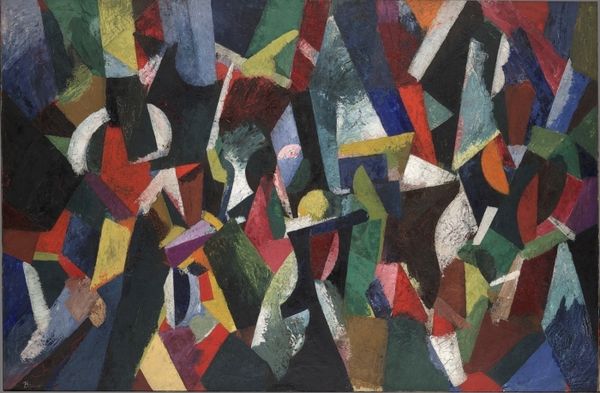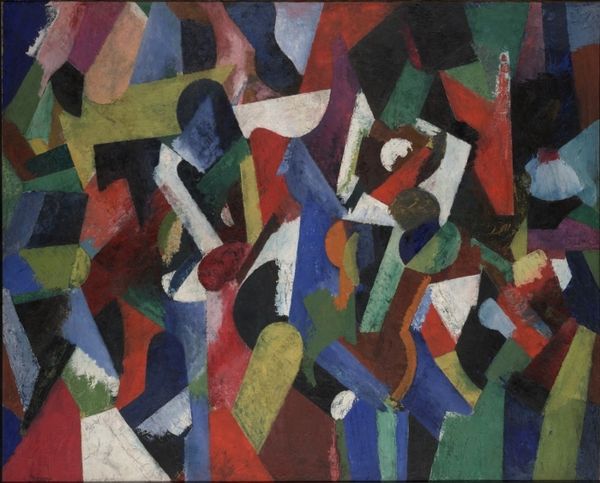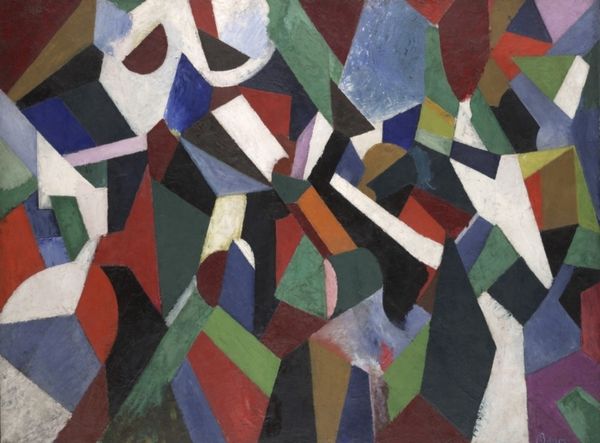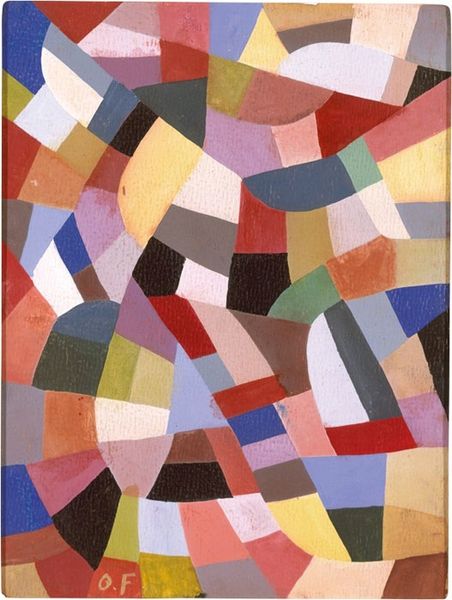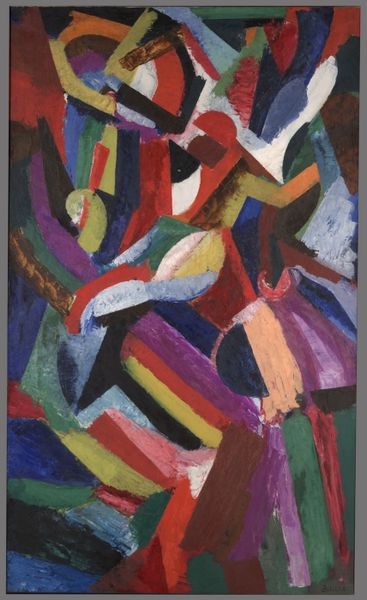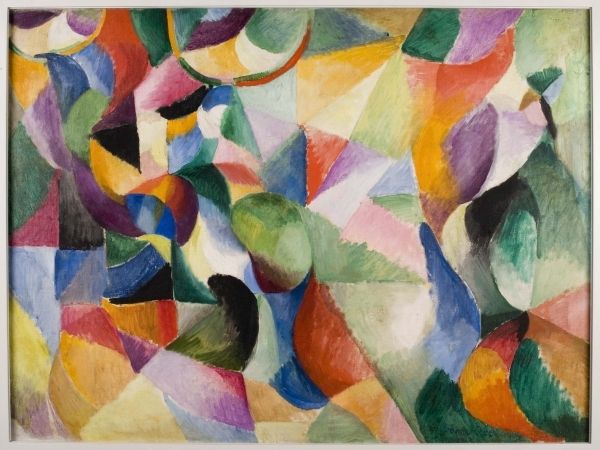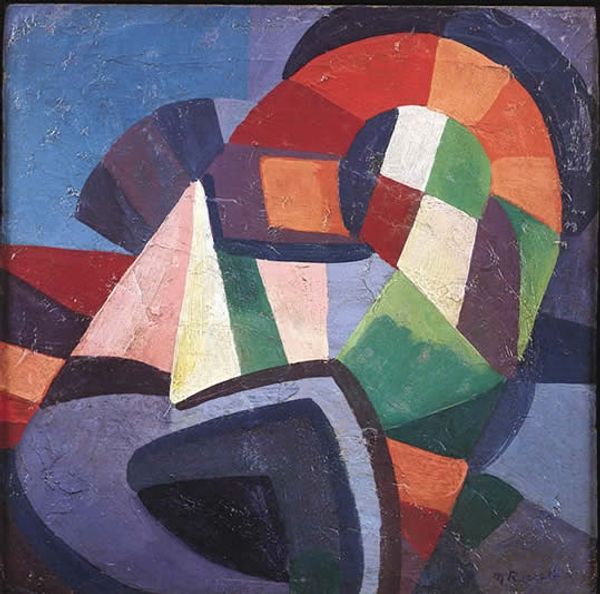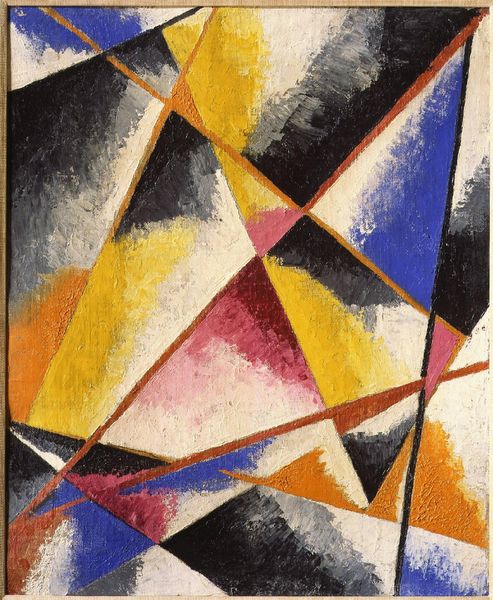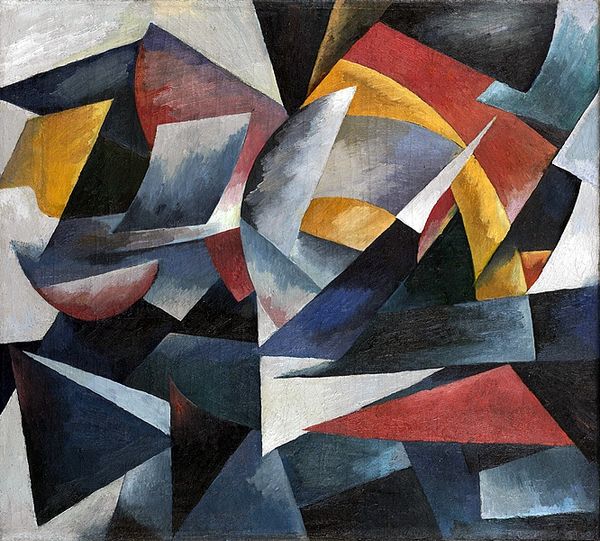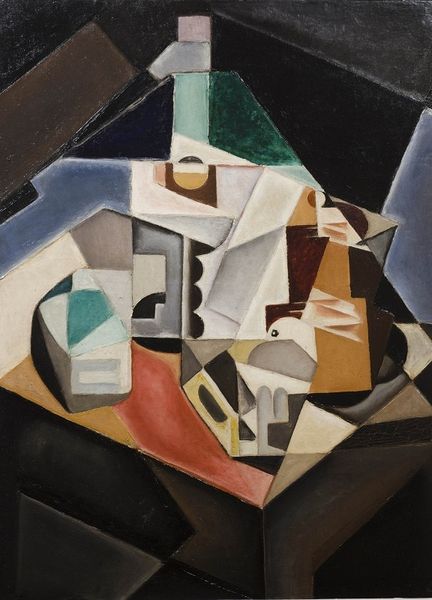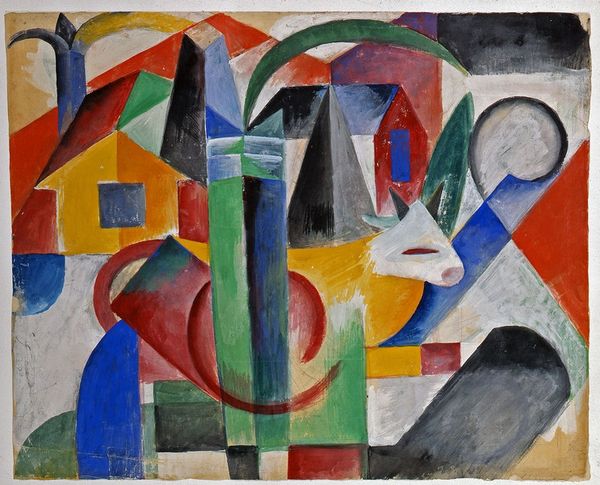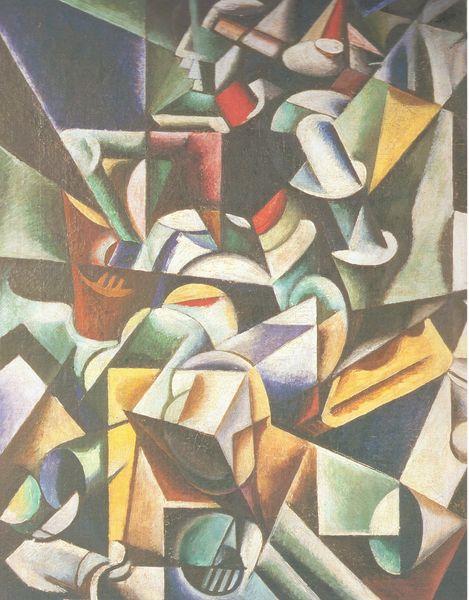
painting, oil-paint
#
cubism
#
abstract painting
#
painting
#
oil-paint
#
geometric
#
geometric-abstraction
#
abstraction
#
orphism
#
modernism
Copyright: Public domain
Editor: This is "Composition I" by Patrick Henry Bruce, created in 1916 using oil paint. All these interlocked shapes give it a sense of dynamic energy. What do you see in this piece? Curator: This work speaks volumes about the burgeoning machine age and the evolving role of art within a rapidly changing society. Bruce was working within the Cubist and Orphist movements, which aimed to break down traditional representation. Notice how he uses geometric forms to explore space and color, reflecting the growing abstraction in art that mirrored societal shifts. How do you think this abstraction resonated with the public at the time? Editor: It's definitely a departure from traditional art. I imagine it could have been seen as radical, maybe even alienating for viewers used to representational art. Did it have a particular socio-political meaning? Curator: In its rejection of traditional academic styles, abstraction, and modernism as a whole, often aligned itself with progressive social and political movements. It challenged the status quo, both artistically and ideologically, and this particular painting was exhibited during a time of significant social and political upheaval. How did institutions like galleries and museums impact the reception of abstract art during this period? Editor: So the places where art was shown could affect how it was perceived? Curator: Absolutely! Museums and galleries have the power to validate and legitimize artistic movements. Early exhibitions of abstract art, like this one, faced scrutiny and sometimes resistance, shaping the public discourse around what constituted "art." Editor: That's really insightful. It gives the piece a deeper layer of meaning, understanding its position in art history. Curator: Exactly, recognizing its role in that unfolding historical context gives a greater appreciation for what Bruce was trying to achieve and its importance in shaping the future trajectory of artistic expression.
Comments
No comments
Be the first to comment and join the conversation on the ultimate creative platform.
